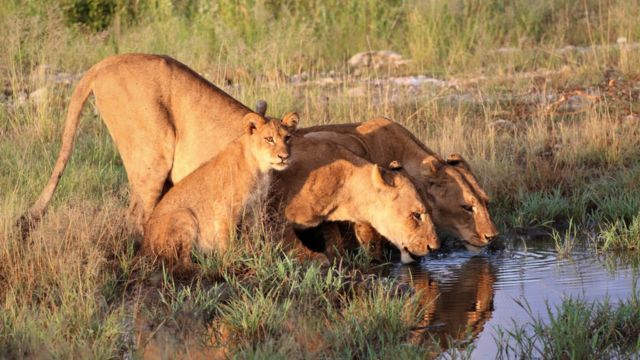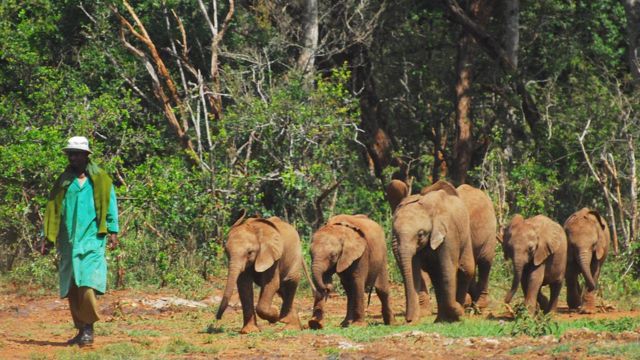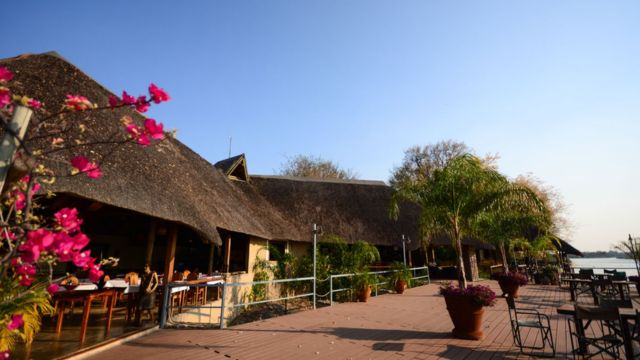
passion for wildlife frequently goes hand in hand with passion for travel, but learning to distinguish between an exploitative experience and an ethical one can be difficult at times. The cruelest aspects of dishonest wildlife tourism often take place behind closed doors—they can even be engrained in the essence of the activity itself.
Elephant riding and tiger cub petting, for example, have been linked to harsh systems that extract animals from the wild for the sole purpose of tourism, or that contribute to breeding facilities linked to the illicit wildlife trade.
It’s crucial to remember that wildlife tourism is a business; organizations that don’t value sustainable and responsible methods can only succeed for as long as markets exist for them. The demand for unethical activities will decline as more travelers become aware of wildlife abuse and modify their behaviors or expectations. Giving animals the freedom to live freely in their natural surroundings is perhaps the finest way to express our love and admiration for them.
What Qualifies as an Ethical Wildlife Experience?
A good ethical wildlife experience or tour operator supports and contributes to biodiversity conservation while causing as little disruption to natural ecosystems as possible. When conducting your study, consider the organization’s principal goal and keep in mind that a firm can pretend to emphasize conservation while actually not doing so.
Does the organization prioritize animal care over profits? Are they a registered nonprofit, or are they collaborating with one? Don’t be scared to ask probing questions: a really ethical wildlife experience will have nothing to hide.
There are several red flags to look out for in the realm of wildlife tourism, and one of the most common is activities that include feeding wild animals. Feeding wildlife or approaching them too closely might disturb the natural balance of their ecosystems or make animals more habituated to humans, increasing the likelihood of human-wildlife conflict.
National Parks: A Haven for Ethical Experiences
The ideals of conservation and sustainable tourism are embodied in national parks, making them a haven for ethical and responsible wildlife encounters. The natural beauty and diversity of these protected areas make them ideal places to experience nature while leaving as little of a footprint as possible.
Some of the most serious dangers to ecosystems and animal populations are addressed by national parks. Rising temperatures and extreme weather events represent a serious threat to these ecosystems due to climate change. The increasing number of visitors to these areas poses a threat to the paths, the wildlife, and the peace and quiet that make them so appealing.
Threatening native plant and animal populations even more are invasive species. Without proper respect and caution, human encounters with wildlife can cause injury or even death. Visitors and park resources could be at risk due to a lack of maintenance on the park’s infrastructure.
Safaris and Tours

Keep in mind that, while safaris are one of the most unique wildlife tourist experiences available, they frequently take place in some of the world’s poorest and least developed countries. Responsible safaris within conservancies provide economic opportunities for local communities while also helping to safeguard endangered species from poaching.
Finding a firm, lodging, or guide who is integrated or active with the local population is critical to long-term wildlife conservation in these areas.
Wildlife tours should be small, non-invasive, and responsibly managed, with education and/or research taking precedence. More significantly, the money you pay should go directly toward the conservation of the wild regions you visit. Responsible Travel, situated in the United Kingdom, is an excellent resource for ethical safaris, responsible gorilla trekking, and other wildlife activities.
Aquaria and Zoos
Zoos and aquariums were originally employed for commercialized amusement, but management standards and goals have altered in the twenty-first century. Many people, particularly in the United States, have begun to phase out specific species in order to focus on their survival in the wild; some have even played a role in saving other wildlife from extinction.
As a result, many wildlife specialists believe that zoos and aquariums should be evaluated individually. Sylvia Earle, one of the world’s most prominent marine biologists and animal advocates, has said that aquariums sparked her interest in the ocean. “It’s hard to care about something you’ve never seen,” she says, and not everyone has the opportunity to travel to remote locations, scuba dive beneath the sea, or go on a safari.
Protected Areas
National parks, state parks, nature preserves, and other controlled protected areas offer some of the best habitats for wild, often endangered, species. Even better, most parks are managed individually based on their distinct habitats and demands. National seashores can protect nesting seabirds by establishing beach habitats, and a dark sky reserve can limit artificial light pollution to safeguard nocturnal pollinators. The money you pay for entrance often goes straight to the park.
Many parks urge people to keep a minimum of 25 yards away from all wildlife and 100 yards away from larger carnivores such as bears or wolves. However, because each park is different, it’s a good idea to examine the park’s specific recommendations for wildlife viewing and food storage before venturing out.
Patience is essential while visiting a protected wild region. You won’t see as many creatures as you would in a zoo, but the benefit of seeing an animal in its natural habitat may be worth it.
Voluntourism
“Voluntourism,” or travel to a specific location or organization with the goal of completing volunteer work, can be a difficult venture to navigate. Some businesses misrepresent their goals, selling visitors pricey feel-good packages that do not always have a favorable impact.
Check to see whether the corporation takes jobs away from local communities rather than working with them; if the experience comprises primarily of labor such as building facilities or cleaning out enclosures, that’s a positive sign. Before signing up, always request a breakdown of where your money is going, how much of it is directly benefiting wildlife, and how the organization has specifically made a difference in its field. You can also contact previous volunteers to learn about their experiences.
Conclusion
For conscious visitors, choosing an ethical wildlife encounter is critical. Follow these fundamental guidelines to navigate the difficult world of wildlife tourism. Choose operators who are committed to conservation over profit to prioritize animal welfare. Ethical experiences avoid behaviors that can affect ecosystems and cause disputes, such as feeding or disturbing animals. Choose reputed sanctuaries that offer natural habitats and aid in conservation efforts.
National Parks provide authentic experiences in unspoiled areas, helping to preserve and reduce human impact. Seek out experiences conducted by skilled guides to help you better understand wildlife behavior and habitats. Finally, prioritize ethical operators, conduct extensive research, and make deliberate decisions to support responsible wildlife encounters that respect animals and their environments.


